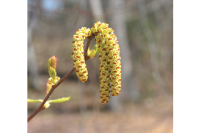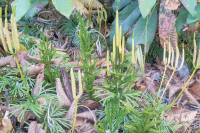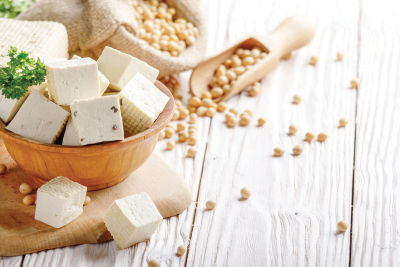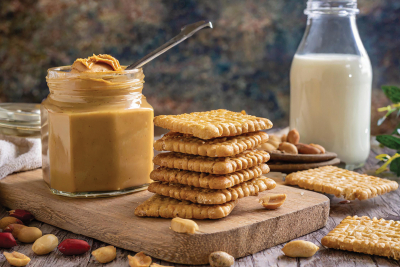Shagbark hickory among the most interesting in WNC
 The walnut family is relatively small, but it contains some of the more interesting and valuable tree species found in Western North Carolina. In WNC there are only two genera, the walnuts (Juglans) and the hickories (Carya).
The walnut family is relatively small, but it contains some of the more interesting and valuable tree species found in Western North Carolina. In WNC there are only two genera, the walnuts (Juglans) and the hickories (Carya).
Buckeyes still beguile nature lovers
 A large yellow buckeye tree overhangs and supports the swinging gate that accesses our property. The tree has started to drop the unique fruiting structures for which it is named. Year around, it always has something interesting going on.
A large yellow buckeye tree overhangs and supports the swinging gate that accesses our property. The tree has started to drop the unique fruiting structures for which it is named. Year around, it always has something interesting going on.
Liverworts — a unique bridge in the plant world
 Some years ago, when I first became interested in plant identification, I became curious about liverworts. They are one of the distinctive plant groups (like fungi, lichens, mushrooms, etc.) without advanced vascular systems.
Some years ago, when I first became interested in plant identification, I became curious about liverworts. They are one of the distinctive plant groups (like fungi, lichens, mushrooms, etc.) without advanced vascular systems.
A book every naturalist needs on his or her shelf
Naturalist Donald Culross Peattie (1898-1964) was born in Chicago. In his autobiography The Road of a Naturalist (1941), Peattie recalled his first extended visit to the North Carolina mountains in 1906 as a time when he “saw the world of people fall away, grow small, grow hazy blue, forgotten. In seven months upon that isolated summit of the Appalachians, I began to discover a world older and greater. It is the world now of my established habitation, my working days and holidays, and it lies open to all men, in valleys as on mountains, by any road you choose to enter.”
Serviceberry is recurring harbinger of spring
I have two options when driving back and forth from home to town. One is along a river and the other isn’t. The choice is easy. I always follow the route along the north side of the Tuckaseigee west of Bryson City. If asked to name that section of road I’d name it for a tree. I’d call it Sarvis Road because every year that’s where I note for the first time — as I did this past Monday — that serviceberry is in bloom. The showy white flowers with their ribbon-like petals are frequently so numerous on a given tree’s bare limbs they seem to be inundated with snow. They seem even whiter this year.
The hardest tree in North America
I wrote a tribute to the black locust tree some time back. It’s time to take another look. This time around we’ll incorporate the perspectives of a French arborist who visited America during the mid-nineteenth century.
Locust is a winter tree. Outdoors, it’s durable in extreme weather and indoors, it makes superb firewood. When I refer to locust, it’s to black locust (Pseudoacacia robinia), not one of the several other species in that genus such as honey locust.
Beauty, form and function go hand in hand
All too often, we tend to think of flowering plants as something beautiful put on this earth to stimulate human sensibilities.
Nothing, of course, could be less true.
Plants produce flowers to attract pollinators or otherwise distribute pollen in order to achieve fertilization — preferably cross-fertilization — and produce fruit (or seed) so as to assure the viability and continuation of a given species. Beauty, as we perceive it, is a mere side-product of this essential process. Beauty is as beauty does.
If you suffer from hay fever, blame the ragweed
 Allergies are a type of immune reaction. Normally, the immune system responds to foreign microorganisms, or particles, like pollen or dust, by producing specific proteins, called antibodies, that are capable of binding to identifying molecules, or antigens, on the foreign particle. This reaction between antibody and antigen sets off a series of reactions designed to protect the body from infection. When this same series of reactions is triggered by harmless, everyday substances, it is called an allergy.
Allergies are a type of immune reaction. Normally, the immune system responds to foreign microorganisms, or particles, like pollen or dust, by producing specific proteins, called antibodies, that are capable of binding to identifying molecules, or antigens, on the foreign particle. This reaction between antibody and antigen sets off a series of reactions designed to protect the body from infection. When this same series of reactions is triggered by harmless, everyday substances, it is called an allergy.
Let the fall wildflower fruit displays begin
 Most wildflower enthusiasts quite naturally hone in on the showy flowering phase of a plant’s life cycle for observation, identification and enjoyment. Only slowly do we learn to appreciate the post-flowering phase.
Most wildflower enthusiasts quite naturally hone in on the showy flowering phase of a plant’s life cycle for observation, identification and enjoyment. Only slowly do we learn to appreciate the post-flowering phase.
Cardinal flower among the most popular in U.S.
 The late summer wildflower season has arrived. Along roadsides and woodland edges some of our more robust native plants are now coming into full bloom. By “robust” I mean high growing and stout. These would include wild lettuce, common mullein, Joe Pye weed, green-headed coneflower, bull thistle, various species of woodland sunflowers, crown beard, boneset, white snakeroot, New York ironweed, cardinal flower, and many others.
The late summer wildflower season has arrived. Along roadsides and woodland edges some of our more robust native plants are now coming into full bloom. By “robust” I mean high growing and stout. These would include wild lettuce, common mullein, Joe Pye weed, green-headed coneflower, bull thistle, various species of woodland sunflowers, crown beard, boneset, white snakeroot, New York ironweed, cardinal flower, and many others.









